The 25 best superhero movies of all time
From Avengers: Endgame to The Dark Knight, these are the best superhero movies to watch right now
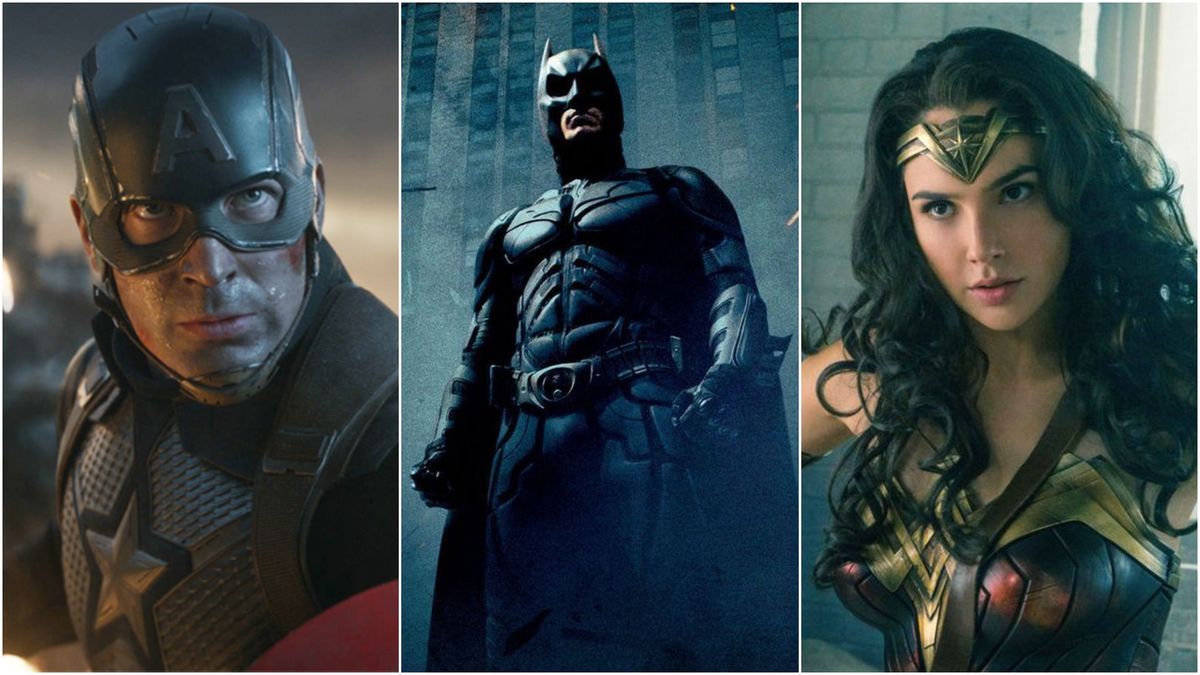
Narrowing down the best superhero movies of all time can be a difficult task because there are just so many of them around. Marvel and DC both have massive cinematic universes, and if you’ve ever tried watching all the DC and Marvel movies in order, you’d know how diverse the pickings are in each franchise. Then there’s also the constant influx of superhero movies that fall outside the MCU and DCEU – the latest example being the newly released film Venom: The Last Dance.
With an already massive genre to navigate and more upcoming superhero movies on their way to keep track of, it may seem daunting. But that's where we come in. We've rounded up the greatest superhero films to make your next movie marathon a breeze. But before we begin, keep in mind that our ranking isn't restricted just to comic book adaptations, either – if it's about a superhero, it's up for the list.
There's everything from loveable animations like The Incredibles to timeless classics like Richard Donner's Superman films below. So, scroll on to check out the 25 best of the best superhero movies that you should watch right now!
25. Watchmen
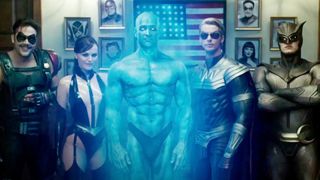
Year: 2009
Director: Zack Snyder
Watchmen was one of the first superhero movies to play with the darker connections of superpowered individuals in the modern world. The film takes place during the backdrop of the Cold War, where heroes worked for the government as agents – fighting in Vietnam and being active participants in the threat of nuclear war. The story of Watchmen may be harder to follow for fans who haven’t read the original DC comics, but its mature themes and gritty visuals still makes for a great watch.
We also recommend that any fans of The Boys check this one out, as the Amazon Prime show builds on ideas first presented in Watchmen. This film is considered a cult classic for a reason, and it paints one of the best grim pictures of how superheroes can easily become weapons and have to deal with being politicized in a world on the brink of destruction.
Read our Watchmen review if you want to dive into more details on this gem.
Sign up to the SFX Newsletter
Get sneak previews, exclusive competitions and details of special events each month!
24. Hellboy 2: The Golden Army
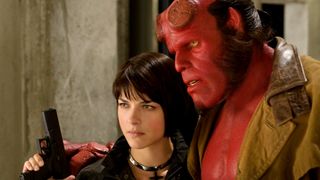
Year: 2008
Director: Guillermo del Toro
Director Guillermo Del Toro cut his superhero teeth with Blade II, shimmied successfully into Hellboy, and then brought out the big guns, quite literally, for the sequel, The Golden Army. This isn't merely a carbon copy of the original – a trap many superhero sequels fall into. Instead, Del Toro crams this deliciously bonkers sequel with a complicated plot that nevertheless works thanks to the sheer bombasity of it.
Everything you loved from the first movie – the quippy one-liners, supporting characters, and steampunk props – is still here in abundance. Ron Perlman's on top form as Hellboy, plus the supporting cast, including Selma Blair, Doug Jones, and Jeffrey Tambor, are given their fair share of screen time.
If you want more Hellboy in your life, you can read our thoughts on his latest movie in our Hellboy: The Crooked Man review.
23. Thor: Ragnarok
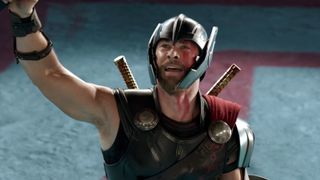
Year: 2017
Director: Taika Waititi
After Kenneth Brannagh's Shakespearean origin story and Alan Taylor's po-faced sequel, Thor was begging for a fresh start. Thank goodness, then, for Taika Waititi, director of What We Do in the Shadows and Hunt for the Wilderpeople, who turned the character around, re-imagining the God of Thunder as an arrogant, comedic mess.
Thor: Ragnarok may not be the most important MCU movie, story-wise, but the movie makes for the funniest Marvel outing to date. Chris Hemsworth, Tessa Thompson, and Jeff Goldblum are all clearly having a blast playing off the fast and loose script. Also featuring dazzlingly outlandish visuals, thanks to some impressive set design and fantastical uses of CGI, Ragnarok makes for a comic book-induced fever dream.
Read our Thor: Ragnarok review for more information!
22. Captain America: The Winter Soldier
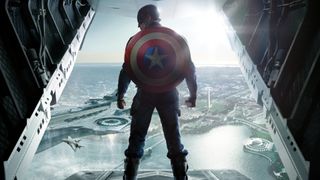
Year: 2014
Directors: Joe Russo, Anthony Russo
Directors The Russo Brothers took what could have been a bland sequel to a so-so superhero movie and made something very special with The Winter Soldier: an action flick that, instead of harkening back to the first film's Second World War adventure, brings the paranoia of the Regan Era into the 21st Century. They even cast Robert Redford.
Having now caught up with the world, Cap's back and ready to bring down the enemy. But who's the enemy? That's the central question here and one that leads to a jaw-dropping twist that changed the MCU (and the TV show Agents of Shield) forever.
If you want to know more about this shield-wielding adventure, check out our Captain America: The Winter Soldier review.
21. Superman 2
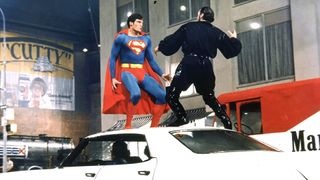
Year: 1981
Director: Richard Lester
The number of superhero movies that have successfully juggled, including multiple villains, can be counted on one hand (the number of failures, though, requires you to use your fingers and toes). Against the odds, Superman 2 successfully managed exactly that, pitting Christopher Reeve's Son of Krypton against numerous antagonists (Krypton criminals General Zod, Ursa and Non in addition to a returning Lex Luthor), and pulling it off in near flawless style.
This, on top of the much-publicized behind-the-scenes woes (original director Richard Donner was fired halfway through production), makes Superman 2 something of a movie miracle. How did the sequel succeed where others have since failed? Focusing on the endearing romance between Clark and Lois gives the movie a very human heart. That, plus some of the finest physical action sequences of the 20th century.
20. Black Panther
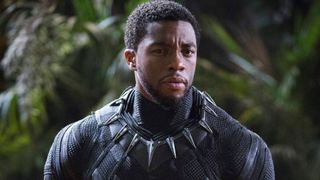
Year: 2018
Director: Ryan Coogler
The first superhero movie to ever receive an Oscar Best Picture nomination, Black Panther makes for a politically astute blockbuster that marks a significant step forward for diversity in Hollywood. However, even when you isolate the movie from its historical importance, Black Panther's a thrilling ensemble action flick that oozes with director Ryan Coogler's flair.
Featuring an impressive cast roster and an incredibly realised Afro-futurist setting, Black Panther features warmth and humanity. Plus, Marvel finally has a villain worthy of your attention in Michael B Jordan's Killmonger, whose raw energy is never put to waste.
Take a trip to Wakanda and read our Black Panther review for more details on this gem.
19. Batman Begins
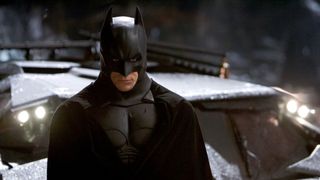
Year: 2005
Director: Christopher Nolan
Between Tim Burton's and Christopher Nolan's Batman movies, there were a couple of, shall we say, mixed outings for the Caped Crusader. The thought of another one in the vein of Batman & Robin was hard to stomach, which perhaps made Batman Begins such a dark surprise.
Nolan brought a certain seriousness to the tale of a billionaire with an alter-ego, the director approaching the comics without wanting to create another frivolous spectacle. This was the first time that a superhero movie was quite so downbeat, Bruce Wayne being a troubled, tormented protector, desperate to make a difference.
18. The Lego Batman Movie
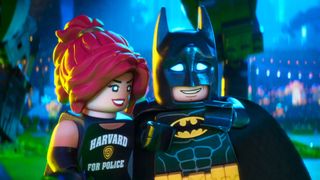
Year: 2017
Director: Chris McKay
Who is Batman? A tortured vigilante? Courageous hero? Wanted criminal? Or maybe, as The Lego Batman Movie makes clear, he's a privileged douchebag who's desperate to be loved? As well as being a slapstick comedy rendered in gorgeous Lego visuals and crammed with Easter eggs, The Lego Batman Movie is one of the best character studies of the Dark Knight out there.
Director Chris McKay, previously best known for episodes of Robot Chicken, wrings Bruce Wayne's isolated soul for brilliantly perceptive comedic effect. The fact that everyone's made out of Danish plastic is just a bonus.
17. Captain America: Civil War
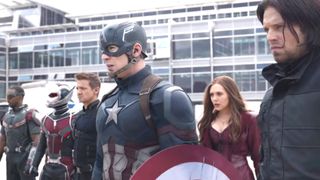
Year: 2016
Directors: Anthony Russo, Joe Russo
Captain America: Civil War basically amounts to Avengers: 2.5. The groundwork for the rift between Tony Stark and Steve Rogers is established in the lesser Age of Ultron, and finally comes up trumps in Civil War. Who's on the right side of history? The man who wants to ensure freedom and the American way? Or the the philanthropist who desires to have a world where superheroes are held accountable?
There are still wise-cracks and silliness contained within Civil War, yet the movie takes a more serious tone than other MCU outings. The Russo Brothers do a miraculous job, somehow giving everyone their dues and introducing the world to Black Panther and a new-look Spider-Man.
Check out our five-star Captain America: Civil War review if you need more information before adding this banger to your watch-list.
16. The Avengers (Assemble)
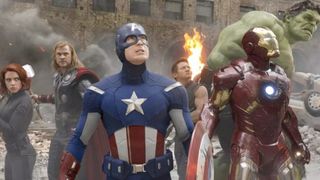
Year: 2012
Director: Joss Whedon
Take Iron Man, Thor, Hulk, Black Widow, Hawkeye, and Captain America, throw them together, and what do you get? Not only The Avengers but a mammoth blockbuster that established Marvel Studios as a true powerhouse. While team-ups had been happening in the comics for years, cinema finally caught up in 2012. And, while nobody expected The Avengers to work, Joss Whedon proved critics wrong, bringing together the superheroes in a seemingly effortless style.
No Avenger feels clunky or unnecessary to the story, and the action sequences fly by. The Avengers fuse together into a slick machine ready to dispense justice like no other onscreen team before, and the result is thrilling.
Take a trip down Marvel memory lane and read our The Avengers review.
15. Superman
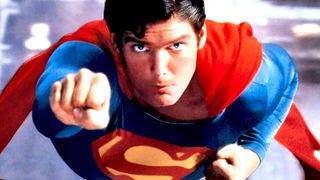
Year: 1978
Director: Richard Donner
Richard Donner's Superman may not have been the first feature to bring Krypton's favourite son to the big screen, but it remains, despite Zac Snyder's best effort, the best. While Superman may be an origin story, the movie does not simply explain Kal-El's past. It instead tells a spectacular story about a heroic man who falls in love and saves the day from a terrifying villain (Gene Hackman in a wonderfully camp form).
Christopher Reeve brings hope and humanity to Superman, making some of the cheesier elements of Donner's movie slightly easier to stomach. There has not been a better Clark Kent since.
A new Superman movie is coming as part of James Gunn's DC Chapter One plan. For more information, check out our guide on everything you need to know about 2025's Superman.
14. Kick-Ass
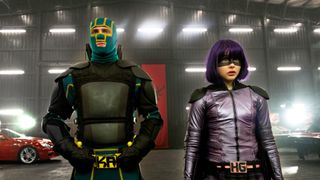
Year: 2010
Director: Matthew Vaughn
Matthew Vaughn and Mark Millar's collaboration caused controversy when initially released. Not purely because of the abundance of blood-splattered violence and bad language but because 12-year-old Chloe Moretz was dishing out both. Kick-Ass is subversive to the point of making you wince.
The movie sees Aaron-Taylor Johnson's teenager embrace his love of comics by becoming the real-life superhero Kick-Ass. Going up against a wealthy foe who defeats him time and time again, the vigilante ends up joining forces with Hit-Girl (Moretz) and Nicolas Cage's Big Daddy. And when Cage's quirkiness is the least batshit thing onscreen, you know you're onto a winning movie.
13. Batman Returns
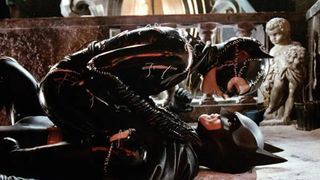
Year: 1992
Director: Tim Burton
Arguably one of the best Christmas movies of all time, Batman Returns is a Tim Burton masterpiece. Michael Keaton’s on swaggering form as a returning Batman, Michelle Pfieffer steals every scene as Catwoman, and Danny De Vito’s grotesque Penguin makes for one of the best comic book villains ever put to screen. All three actors are at the peak of their powers, operating in tandem with one of the most unique visionaries of the 20th Century. Pure heroic heaven.
Often overlooked when it comes to ranking Bats’ best on-screen efforts, Batman Returns is dark without being dingy; gritty without being grimy – and Batman without the Bat-Nipples. What’s not to like?
12. Wonder Woman
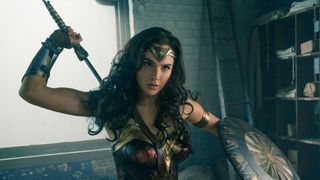
Year: 2017
Director: Patty Jenkins
We know what you're thinking: another origin story? Really? Yet, despite Wonder Woman being such a well-known character, Patty Jenkins' movie makes for a wonderfully fresh take on the hero's royal beginnings.
Growing up on the Amazonian island of Themyscira, Princess Diana's monotonous life is interrupted by an American pilot, Steve Trevor, who crashes offshore. After learning about the horrors of the First World War, and believing Zeus's son Ares responsible for the conflict, Diana takes it upon herself to resolve the fight. Wonder Woman delivers a hope-charged blast of purely enjoyable entertainment, with delicious chemistry bubbling between Gal Gadot's Diana and Chris Pine’s Steve.
Want more comic action? Read our list of the best Wonder Woman stories of all time.
11. Avengers: Endgame
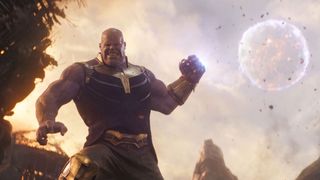
Year: 2019
Directors: Anthony Russo, Joe Russo
If Avengers: Infinity War was Marvel's Empire Strikes Back, then Avengers: Endgame makes for the studio's Return of the Jedi: not quite as serious as the movie that came before, but covers up identifiable faults with jaw-dropping action and a sense of fun.
Endgame's stuffed three-hour runtime somehow feels breezy, with the movie being a mixture of both intimate and epic. The writers are deviously clever, paying homage to the other MCU movies while never losing sight of what's at stake. While some Marvel fans may not be best pleased by how the adventure ends following the almost unconquerable climax of Infinity War, there's one thing that's certain; we'll be talking about Endgame for years to come.
Read our spoiler-free Avengers: Endgame review if you want to know more about this MCU masterpiece.
10. Unbreakable

Year: 2000
Director: M. Night Shyamalan
A self-confessed comic book fan, director M. Night Shyamalan, master of the twist, decided not to adapt an already established superhero story and instead created something entirely original.
Unbreakable makes for a remarkably subtle character study compared to some of the bigger-budget superhero flicks on this list, telling the tale of security guard David Dunn (Bruce Willis) who has to come to grips with his abilities, all while dealing with the shady Elijah Price (Samuel L. Jackson). There's no spandex; no moral ranting about responsibility, just a look at what having superpowers may actually look like.
For more super thrills, check out our Unbreakable review!
9. X2
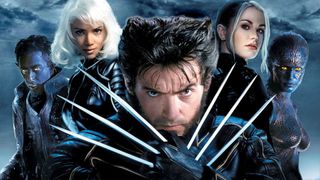
Year: 2003
Director: Bryan Singer
With everyone so desperate for the mutants to arrive in the Marvel Cinematic Universe, fans often forget just how great those early X-Men movies are. X2 easily takes the top spot. Not only are the eponymous heroes going up against Magneto (playing with astonishing villainy by Ian McKellen), but also Brian Cox's Stryker. Mixed with a quasi-origins story for Wolverine (Hugh Jackman at his best) and some very distressing scenes in Stryker's base, you have superhero royalty right here.
Did we also mention the amazing cast? As well as the aforementioned names, there's Patrick Stewart, Halle Berry, James Marsden and Famke Janssen appearing as the definite movie versions of Professor X, Storm, Cyclops and Jean Grey.
This is one of the best superhero movies to watch on repeat, so be sure to read our X-Men 2 review if you want to know more mutant details.
8. Batman
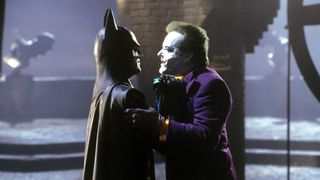
Year: 1989
Director: Tim Burton
For a minute, just forget about Nolan's Batman trilogy. Sure, we can thank the Inception filmmaker for injecting modern superhero movies with a sense of realism, but Tim Burton's take on the Caped Crusader had an equally huge impact on Hollywood. Following the success of Beetlejuice, Burton and Michael Keaton decided their next joint venture would be a retelling of a campy comic book hero on the big screen. Note: campy – not because of the source material, but because the previous Bats adaptation was Adam West's gadget-loving, spandex-wearing light knight.
When Burton's version arrived, then, everyone was surprised at just how dark (literally and figuratively) a superhero movie could be. Anchored by Keaton's stoic performance and lifted by Jack Nicholson's iconic Joker, Batman holds its own against the CGI-heavy blockbusters of today and remains one of the best superhero movies of all time.
7. Avengers: Infinity War
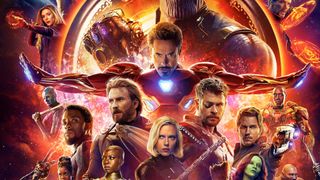
Year: 2018
Directors: Anthony Russo, Joe Russo
Infinity War marks the climactic end to 18 movies worth of storytelling. Dozens of Marvel heroes finally unite together for a thrilling finale that miraculously feels like an ending (despite a sequel being a known extension of the story upon release). The Russo Brothers cram the running time with stunning fights, conflicts, and team-ups, all while giving the villain Thanos a thoroughly convincing backstory. And the Purple Titan's the real star, bringing all the loose plot strands together. Josh Brolin offers a laudable performance as the CGI being, helping create a character who is truly terrifying.
Elsewhere, both the script and the cast do an admirable job of managing an incredible headcount, as almost the entire MCU tries to stop Thanos. The scale and ambition of Infinity War is a daring achievement, and that ending... oh, that ending haunted Marvel fans for an entire year before Endgame finally landed.
Read our Avengers: Infinity War review for more information on the best Avenger movie that Marvel has made so far.
6. Spider-Man 2
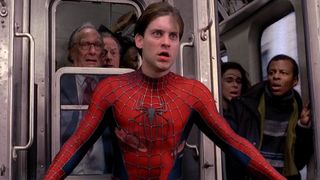
Year: 2004
Director: Sam Raimi
Sam Raimi's second Spider-Man strikes a perfect balance between aerial acrobatics, action set pieces, Spidey's inner struggle to become a hero, and his romance with Mary Jane. There are a lot of pieces to juggle, and yet every component works in tandem to create a near-perfect Spider-Man story.
There's a great villain in Doctor Octavius, played by Alfred Molina, whose turn from mentor to antagonist makes for a heartbreaking story. Sure, some of the effects are dated, but Spider-Man 2 remains one of the best superhero movies to date and the best Spider-Man movie ever made.
5. The Incredibles
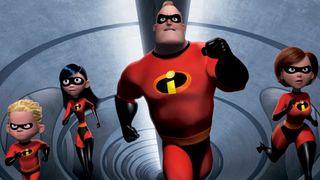
Year: 2004
Director: Brad Bird
One of Pixar's most beloved films, The Incredibles takes inspiration from the golden era of comic books, imitating recognisable moments and sequencing them for a family adventure that's entertaining for both kids and parents alike.
Beneath the lycra outfits and caricature villains, The Incredibles makes for a heart-warming tale about the importance of family. Director Brad Bird, who also voices the movie's best side-character Edna Mode, proves why Tom Cruise wanted the filmmaker for Mission: Impossible – Ghost Protocol with some stunning action set-pieces.
4. Guardians of the Galaxy
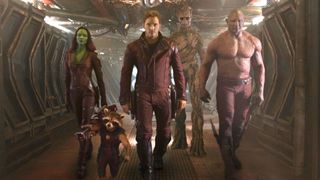
Year: 2014
Director: James Gunn
Guardians of the Galaxy rewrote the rules of the Marvel Cinematic Universe. Turns out, superhero movies can be silly and irreverent. From the opening scene right up until the final moments, writer-director James Gunn's love for the material is on brazen display, every frame oozing with soul.
And the cast. Chris Pratt's turn as the hilarious Star Lord was a revelation, the actor only really being known for Parks and Recreation pre-Guardians. Then there's Zoe Saldana as the moody Gamora, Dave Bautista as the excellent Drax, and Bradley Cooper as the voice of Rocket. Every member of the eponymous group of misfits works. Plus, there's the throwback soundtrack and just enough fan service to make this a must-watch installment in the MCU.
Read our Guardians of the Galaxy review for more details!
3. Logan
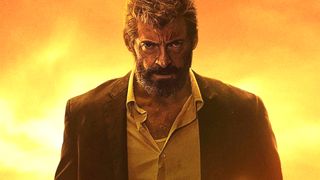
Year: 2017
Director: James Mangold
Despite Fox marketing Logan as Marvel's answer to Nolan's Batman trilogy, comparing the X-Men spin-off to The Dark Knight does the movie a disservice. Sure, both are superhero stories thoroughly grounded in realism, yet Hugh Jackman and director James Mangold's depiction of a world-weary, aging Wolverine and his dysfunctional family remains a unique character study.
Logan offers a deeper look at a character who's always suppressed his actual feelings, having always defaulted to pure rage. There are few flashy action set pieces, with Mangold keeping to messy scraps between characters. Logan subsequently delivers an emotional, surprising wallop that will have every X-Men fan in tears.
We also have an in-depth Logan review if you want to learn more about Wolverine's glorious end.
2. Spider-Man: Into the Spider-Verse
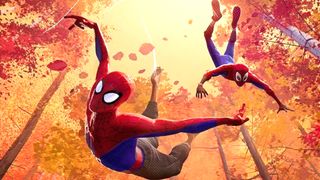
Year: 2018
Directors: Bob Persichetti, Peter Ramsey, Rodney Rothman
Spider-Man: Into the Spider-Verse understands Spider-Man more than any other Spider-Man movie: he's a teenager struggling with Uncle Ben's famous adage: "With great power comes great responsibility." Produced by Phil Lord and Chris Miller, Spider-Verse makes for a beautifully animated romp through multiple dimensions that gives dozens of knowing nods to Spider-Man films and TV shows of the past yet never excludes those viewers who may not have seen every Spidey outing.
While the story centres on Miles Morales, Peter Parker's still here, thanks a split in the multiverse. As a result, we have multiple Spider-Men (including an older, chubbier Parker, Spider-Gwen, Spider-Ham, and even Nicholas Cage's noir Spider-Man) going up against Kingpin. The premise may sound complicated, but Spider-Verse makes things seem so simple, thanks to a hilarious smart script. Did we mention this won the Oscar for Best Animation? Deservedly so.
Read more about one of the best superhero movies and one of the best animations of all time with our Spider-Man: Into the Spider-Verse review.
1. The Dark Knight
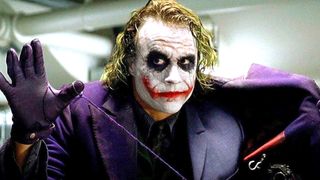
Year: 2008
Director: Christopher Nolan
The Dark Knight isn't just the best superhero movie of all time; it's also one of the best Batman movies ever made. Splitting screen time between day and night, The Dark Knight focuses as much – if not more – on Batman's alter ego, Bruce Wayne, who must grapple with the decidedly chewy morals of fighting crime and doing what's acceptable when saving the day.
Gotham, meanwhile, is presented as a nightmare city with a festering underbelly of crime lords and a general public aching for a hero. Of course, any good superhero must have a super-villain to match them. Enter Heath Ledger's Joker. A controversial casting at the time, Ledger makes for the perfect manic, unnerving murderer. With garish makeup and enigmatic platitudes, Joker steals the show. Few were surprised when he was awarded a posthumous Oscar for Best Supporting Actor.
There have been several attempts to recreate Batman's story since The Dark Knight faithfully, but never has it been achieved with such brazen disregard for the rules.
For more superhero action, check out our Marvel timeline and guide on how to watch all the DC movies in order. Or, if you want to catch up on new releases, read our Venom: The Last Dance review.
I'm GamesRadar's Features Writer, which makes me responsible for gracing the internet with as many of my words as possible, including reviews, previews, interviews, and more. Lucky internet!
- Emma-Jane BettsManaging Editor, Evergreens
Most Popular


